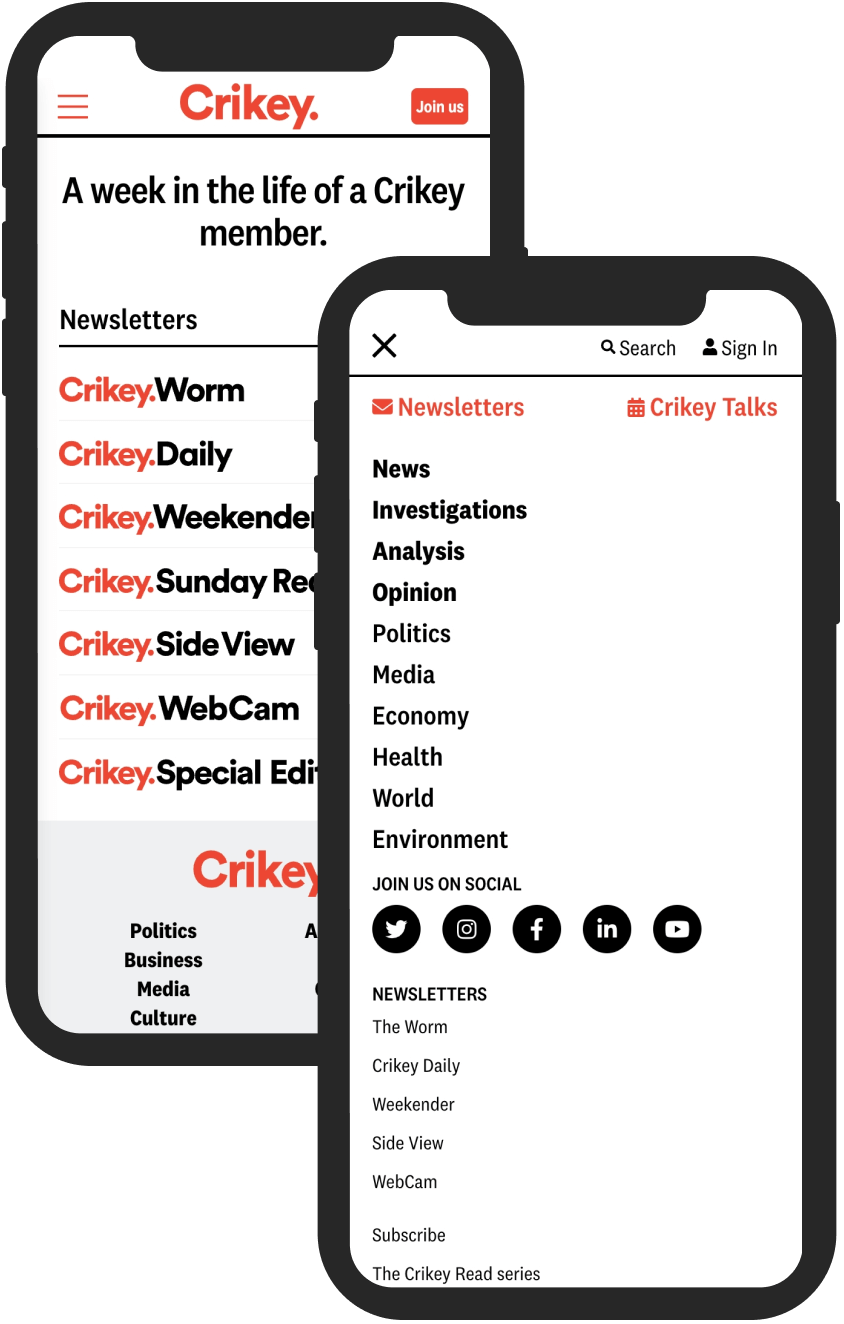Modernising and migrating political publisher Crikey
As Australia’s most vigorously independent news publication with 20 years of fearless journalism under its belt, Crikey needed to modernise its publishing technology stack for the 21st century.
The Challenge
Eliminating layers of outdated technology
Crikey is one of the most respected political publishers in the Australian market, producing content online and a popular newsletter for paying subscribers.
Along with its unique history in the news industry, Crikey was one of the earliest adopters of the WordPress Multisite platform, having run on it since 2008 – before it was even included in WordPress core.
Most of the site’s backend code was created in the early days of WordPress, which meant things were done differently from modern WordPress best practices.

End-to-end digital transformation
With a major redesign underway, Crikey engaged The Code Company to oversee the delivery of the entire web development project.
When Crikey first moved to WordPress in 2008, the CMS was still in its early stages.
In order for the original website to work the way it needed, Crikey had to use a lot of manual overrides or ‘hacks’ to meet its business requirements.
A big project goal for the website relaunch was to remove these ‘cobwebs’ and eliminate the need for technical workarounds.
Our team started to rewrite custom business logic using WordPress best practices and standards.
We could then take advantage of the immense advancements in WordPress features since 2008.
Our existing solutions were as convoluted as our requirements — and the technology was full of loops and hacks and a zillion more queries.
The Code Company implicitly and explicitly understood our need to make things respond in a way that makes sense.
Nadine Raydan, Head of Product & Operations Crikey

A 200% performance increase
Our engineering team reviewed the HTML, CSS and JS provided by Crikey's UI agency to ensure they integrated into a scalable WordPress theme.
We also ensured every aspect of the website took advantage of all the caching and performance tools available in WordPress.
The result was a lightning fast publishing website that:
- Decreased back end load time from 1400ms to 400ms.
- Reduced end-user load time from 50 seconds to 5 seconds.

Optimising the Private Media tech stack
In addition to redeveloping the Crikey website, The Code Company provided technical support to parent company Private Media.
Our enterprise WordPress developers worked with Private Media on a number of projects to enhance their technology stack with:
- A move to full HTTPS – We were able to resolve a wide range of outstanding, partially-implemented HTTPS issues, and manage the search engine implications for the transfer.
- PHP upgrades – We unlocked significant performance and development benefits.
- A user database cleanup – We developed a bespoke tool to sweep the user database of hundreds of thousands of defunct, duplicate or corrupted user accounts.
- A conversion to fully responsive UI – We moved away from the often clunky and ineffective approach of split desktop and mobile websites.
- A Google Ad Manager integration – we transitioned the sales team from their cumbersome ad tech platform to an optimised Google Ad Manager setup
WordPress-native newsletters
The respected Crikey Insider newsletter is sent daily to members, but the editorial experience was slow and clunky.
Crikey’s legacy newsletter builder predated most of WordPress’ APIs. The editorial team were increasingly frustrated with the time it took to create the daily newsletter.
The Code Company have extensive knowledge of publishing workflows and requirements for a newsletter builder. We custom-built a WordPress-native newsletter builder tool that allowed the staff to rapidly assemble and send the daily newsletter.




